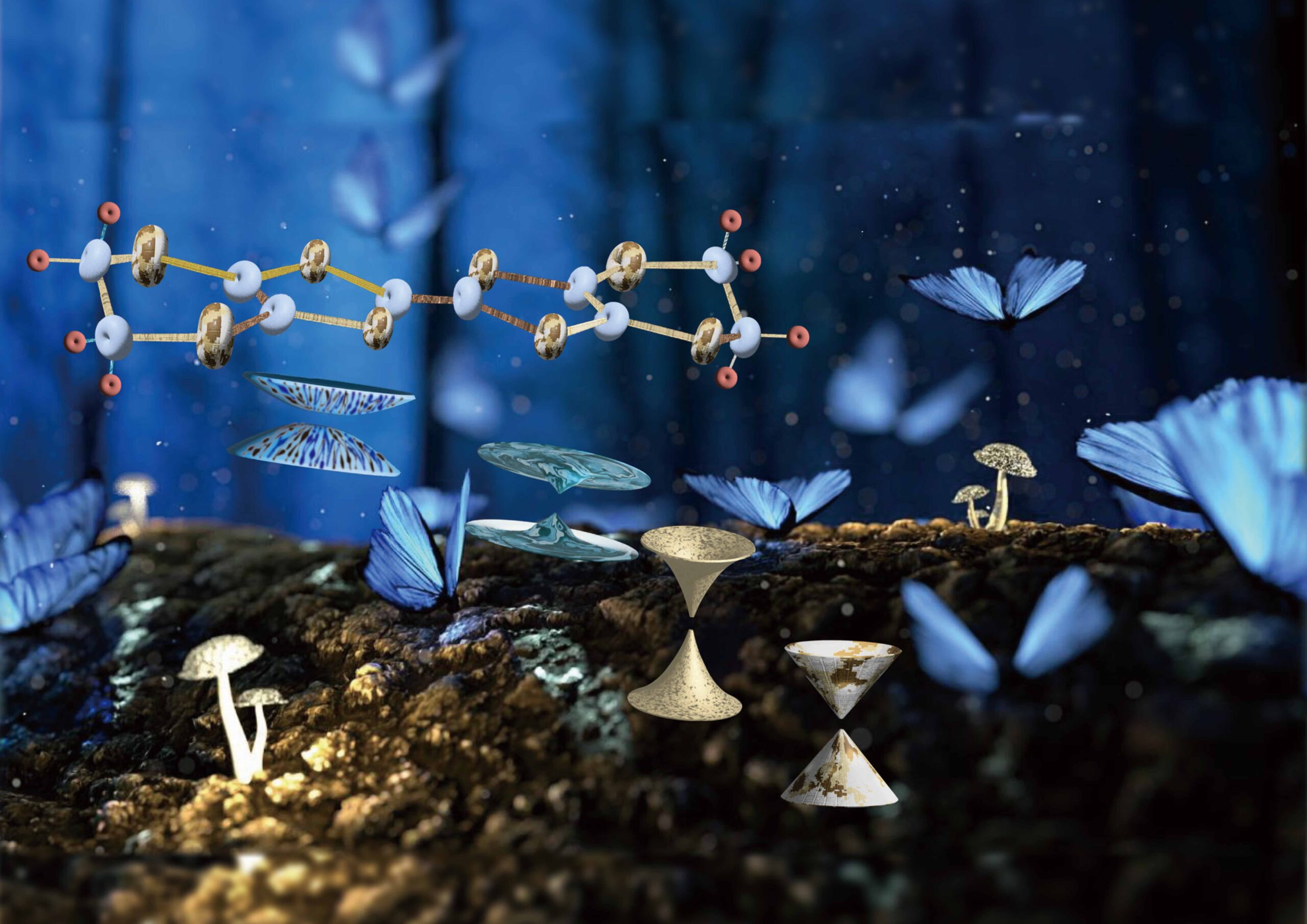Photon-like electrons in a four-dimensional world discovered in a real material
The “scope of action” and the velocity of Dirac electrons in an organic material
In materials, Dirac electrons behave like photons rather than electrons and thus are expected to add unprecedented properties to materials. They coexist with standard electrons, which prevents the study of the net effects of their properties. The Naito research group of Ehime University discovered an observation method selective to Dirac electrons using electron spin resonance. This method will accelerate the study of how and why such electrons modify physical properties.
Dirac electrons were predicted by P. Dirac and discovered by A. Geim, both of whom were awarded the Nobel Prize in Physics in 1933 and in 2010, respectively. Dirac electrons behave like photons rather than electrons, for they are considered to have no mass and in materials they move with light velocity. Because of such differences from standard electrons, they are expected to add unprecedented electronic properties to materials. For example, they could be applied to electronic devices to perform computation and communication with an extraordinary efficiency and low energy consumption.
To develop such technology, we must first understand the net properties and effects of Dirac electrons. But they generally coexist with standard electrons in materials, which prevents unambiguous observation and measurement. In the present study, Naito et al. discovered a method enabling selective observation of the Dirac electrons in materials. Using electron spin resonance, to directly observe unpaired electrons in materials to distinguish differences in character, the research group established amethod to determine their scope of action in the materials and their energies. The latter information contains how rapidly they move, namely the velocity. This information requires a four-dimensional world, for it consists of positions (x, y, z) and energy (E). The present research group has described it in an easy-to-understand scheme.
These findings, have taken the understanding Dirac electrons a step forward. We now know that their velocity is anisotropic and it depends on their direction and location, instead of the constant velocity of light.
Reference URL: https://pubs.rsc.org/en/content/articlelanding/2024/ma/d3ma00619k
Bibliographic Information
Nearly three-dimensional Dirac fermions in an organic crystalline material unveiled by electron spin resonance, Ryuhei Oka, Keishi Ohara, Naoya Tajima, Toshihiro Shimada, and Toshio Naito, Materials Advances, 5(4), 1492—1501, 2024 (February 19), DOI: 10.1039/D3MA00619K
Fundings
- Japan Society for the Promotion of Science(JSPS) KAKENHI Grant Number 18K19061 22H02034
- the Iketani Science and Technology Foundation (ISTF; 0331005-A)
- the Research Grant Program of the Futaba Foundation
- CASIO Science Promotion Foundation
- Ehime University Grant for Project for the Promotion of Industry/University Cooperation
- the Canon Foundation (Science and Technology that Achieve a Good Future)
Media
-

The major component molecule of a Dirac electron system and a continuous change in the cone-shaped electronic structure
A characteristic shared by Dirac electron systems is the cone-shaped electronic structure, while common materials have round electronic structures. The key to the success of the present study lies in the idea that attention should be paid to a possible crossover between two extreme electronic structures., A new method has been established using electron spin resonance to observe the material.
credit : Ehime University (Toshio Naito)
Usage Restriction : Please get copyright permission
Contact Person
Name : Toshio Naito
Phone : +81 (0)89-927-9604
E-mail : tnaito@ehime-u.ac.jp
Affiliation : Graduate School of Science and Engineering
